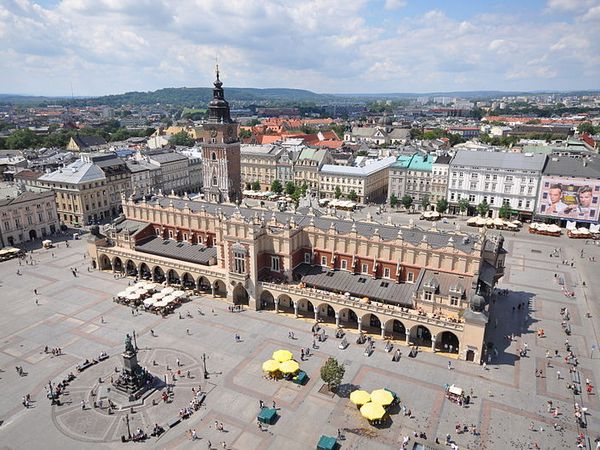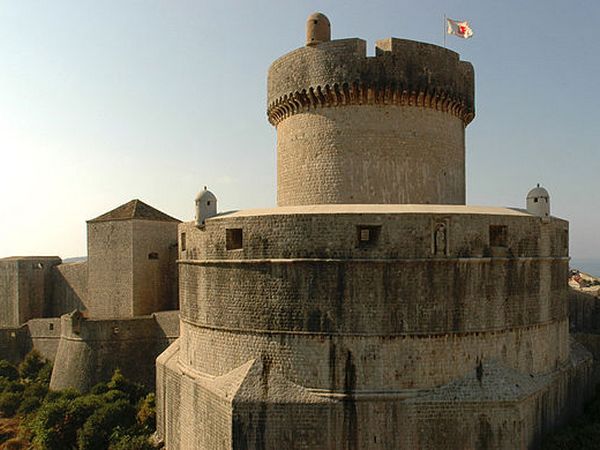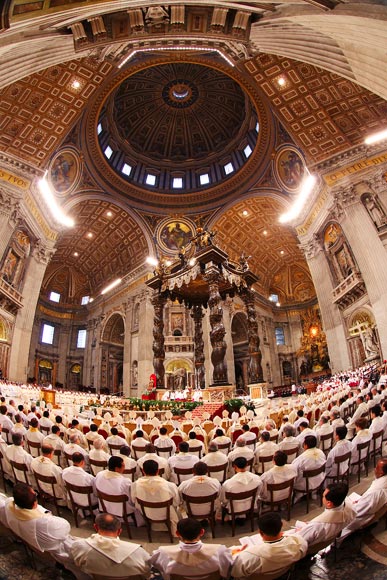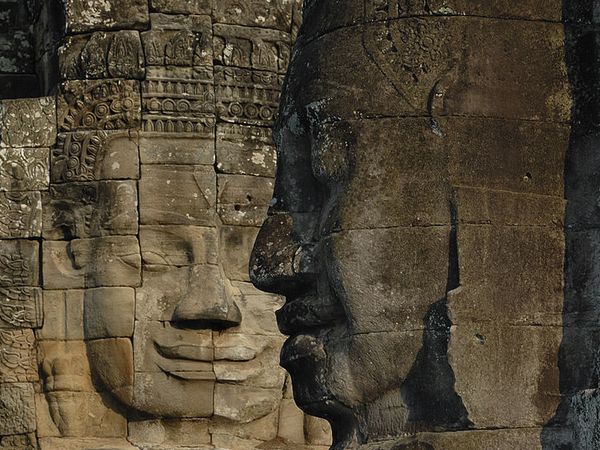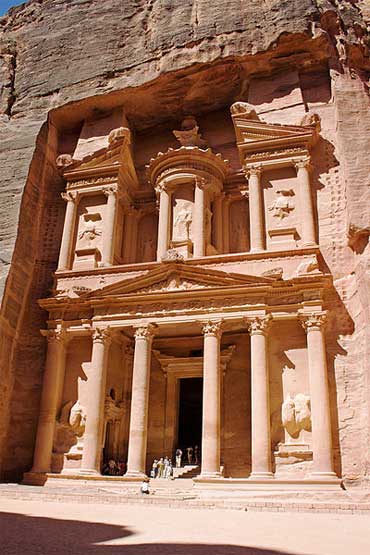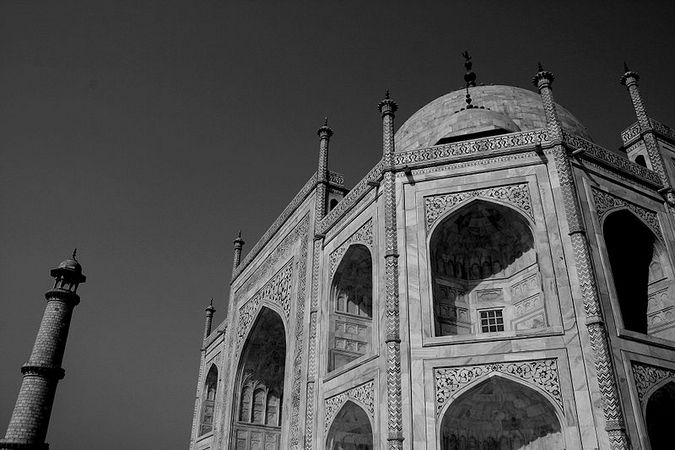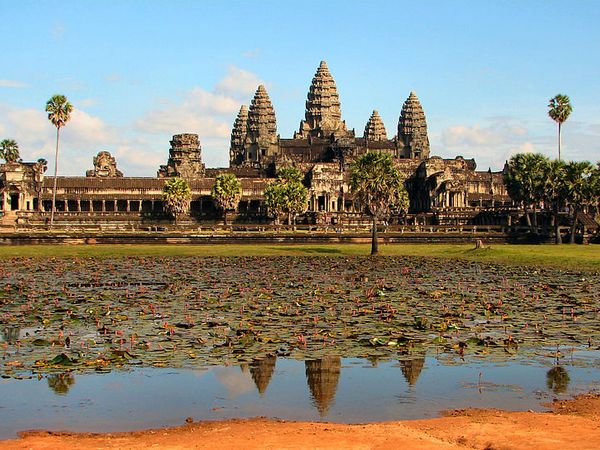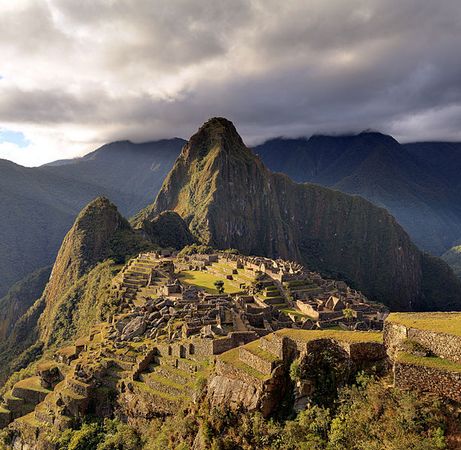 | « Back to article | Print this article |
Photos: Top 10 landmarks in the world
Don't miss the top 10 landmarks around the world in TripAdvisor's Travellers' Choice listings.
The world's largest travel website, TripAdvisor, has announced its Travellers' Choice Attractions awards that are based on the quality and quantity of traveller reviews of attractions, featured its site in various categories.
Today, we bring you the top 10 landmarks in the world that you must visit. We begin with:
10. Main Market Square (Rynek Glowny)
The largest square of medieval Europe, the Rynek Glowny or Krakow’s main market square is one of Poland’s primary tourist attractions.
Dating back to the 13th century, the square is about 10 acres large and features the 16th-century Renaissance Cloth Hall and the 14th-century Gothic Basilica of the Virgin Mary.
Besides these two buildings, the square that has splendid townhouses as well as palaces and smaller churches was renamed Adolf Hitler Platz during the Nazi occupation of Poland.
Leave aside least two to three hours aside to explore this magnificent landmark to the fullest.
Also see
9. Ancient City Walls, Dubrovnik, Croatia
Located in the city-state of Dubrovnik of southern Croatia, the city’s famed defensive walls are part of the UNESCO’s list of World Heritage Sites.
The walls that run uninterruptedly for about 1,940 metres reach as high as 25 meters in some places and cover almost the entire city. While most parts of the wall and the fortifications were constructed in the 14th and the 15th century, work on their strengthening continued up until the 17th century.
Considered to be the greatest fortification systems of the Middle Ages, the walls were never breached by an army of its time guarding Dubrovnik’s civilised and sophisticated republic that flourished for over 500 years.
Also see:
8. St Peter's Basilica, Vatican City, Italy
Inarguably the best-known example of Renaissance architecture, St Peter’s Basilica remains one of the holiest Catholic sites in the world. Designed by Michelangelo, Gian Lorenzo Bernini, Carlo Maderno and Donato Bramante, St Peter's has been described as ‘the greatest of all churches of Christendom’.
The basilica is believed to be the burial site of Saint Peter, one of Jesus’ twelve apostles. St Peter’s tomb is said to be below the altar of the basilica.
Legend as it that St Peter who met the same fate as Jesus Christ requested the Romans to crucify him upside down since he didn't feel worthy of dying in the same manner as the Saviour.
His last request was granted, and on the site of his martyrdom now stands the largest church in the world -- St Peter's Basilica.
7. Church of Our Savior on Spilled Blood, St Petersburg, Russia
Known locally as Spas na Kravi, the Church of Our Savior on Spilled Blood isn’t difficult to locate with its gold-draped onion-dome on the Griboedova Canal, one of the many waterways in the old Russian capital.
Tripadvisor writes of this site: “The view of this lovely Russian old style church can be had from all over the city. It has some of the loveliest mosaic interiors which were completely restored by 10 mosaic artists over a 14 year period. This is after being used as a warehouse in Soviet times, and having been bombed in WWII. It is as nice inside as it is outside! There are over 7,000 sq meters of beautiful mosaics.”
6. Cordoba: Great Cathedral and Mosque, Spain
On arriving at in Cordoba, the first Umayyad emir Abd ar-Rahman I bought over a Visigothic church and build a mosque over it. Using the marble columns of the Roman temple which had occupied the site previously, as well as other destroyed Roman buildings in their construction of the mosque, the Moors took 200 years to complete the mosque that, at that time, was the second largest one in the Muslim world.
In 1236 when the Spanish reconquered Cordoba, they built a renaissance nave in the middle of the mosque and the mosque became the Christian cathedral.
Regarded as one of the most notable monuments of Renaissance and Moorish architecture, Spanish Muslims have been lobbying with the Roman Catholic Church to permint them to pray in the cathedral.
Visit the monument and chances are you won’t leave unimpressed.
5. Bayon Temple, Cambodia
Constructed in the late 12th or early 13th century, the Bayon Temple served as the official state temple of the Mahayana Buddhist King Jayavarman VII. The temple, located at Angkor Thom, stands at the very centre of the king's capital and was improved upon and modified by later kings depending upon their religious beliefs. However, the most striking features of Bayon are the many huge and serene-looking stone faces, seen pictured above.
4. Petra World Heritage Site, Wadi Musa, Jordan
The historical city that used to be the ancient capital of the Nabataean people was recently proclaimed as one of the New Seven Wonders of the World. Best known for its rock-cut architecture and water conduit system, Petra is believed to be established around 312 BC.
Interestingly, the site had remained hidden from the eyes of the Western World until 1812 when the Swiss explorer Johann Ludwig Burckhardt introduced to them.
Today, Petra (also known as Rose City because of the colour of the stone out of which it has been carved) is one of Jordan’s most-visited tourist attractions and has been described by UNESCO as ‘one of the most precious cultural properties of man's cultural heritage’.
3. Taj Mahal, Agra, India
Inarguably India's most recognisable monument to the world, the Taj Mahal was built by Shah Jahan in the memory of his wife Mumtaz Mahal and has been a UNESCO World Heritage Site since 1983. Regarded as the finest example of Mughal architecture, the Taj Mahal is essentially an integrated complex of structures that took 21 years and thousands of artisans and craftsmen to complete. The Taj Mahal also appears on the new listing of the New Seven Wonders of the World
2. Angkor Wat, Cambodia
It may come as a surprise that the largest Hindu temple complex in the world does not exist in India but rather in Cambodia. Angkor Wat continues to remain a prominent religious centre and one that has become synonymous with Cambodia by also appearing on its national flag. TripAdvisor describes Angkor Wat as being unrivalled in its beauty and state of preservation.
Constructed by the Khmer King Suryavarman II in the early 12th century, Angkor Wat is dedicated to Lord Vishnu and hold a position of great importance in Khmer architecture.
The Angkor Archaeological Park of which Angkor Wat and the Bayon Temple are a part was named as one of UNESCO's World Heritage site in 1992.
Recently, Cambodia joined hands with Australia to better preserve the complex by launching the Angkor Sunset Finder (angkorsunsets.com) that offers alternatives to the usual (and overcrowded) spots from where you can view stunning sunsets.
1. Machu Picchu, Peru
The ancient Incan city of Machu Picchu is without a doubt an architectural marvel, built around 1450, at a height of 7,970 ft above sea level.
Perched atop an Andean plateau, it is often called the lost city of the Incas and is part of UNESCO’s World Heritage Site as well as one of the New 7 Wonders of the World.
One of the primary constructions in the city is the Intihuatana -- a pillar built using stones that point to the sun. At noon on March 21 and September 21, the sun is almost directly above the pillar and casts no shadow.
Believed to be an estate constructed for the Inca emperor Pachacuti, the site was abandoned a century later at the time of the Spanish Conquest. However, since the Spanish never knew about it, Machu Picchu remained a virtually intact cultural site.
The entire city that has been constructed using polished dry stone was however hidden from the eyes of the world till 1911 when the historian Hiram Bingham brought it to international attention. Today it is one of the most popular landmarks in Peru.
